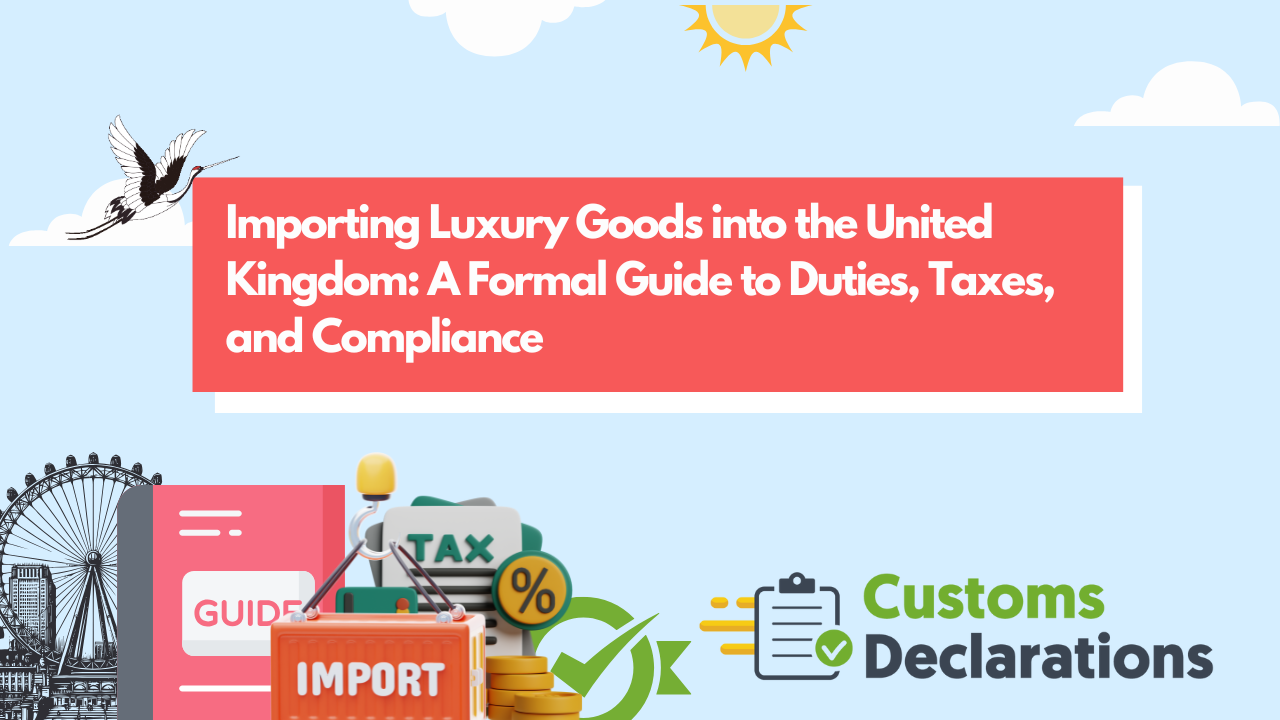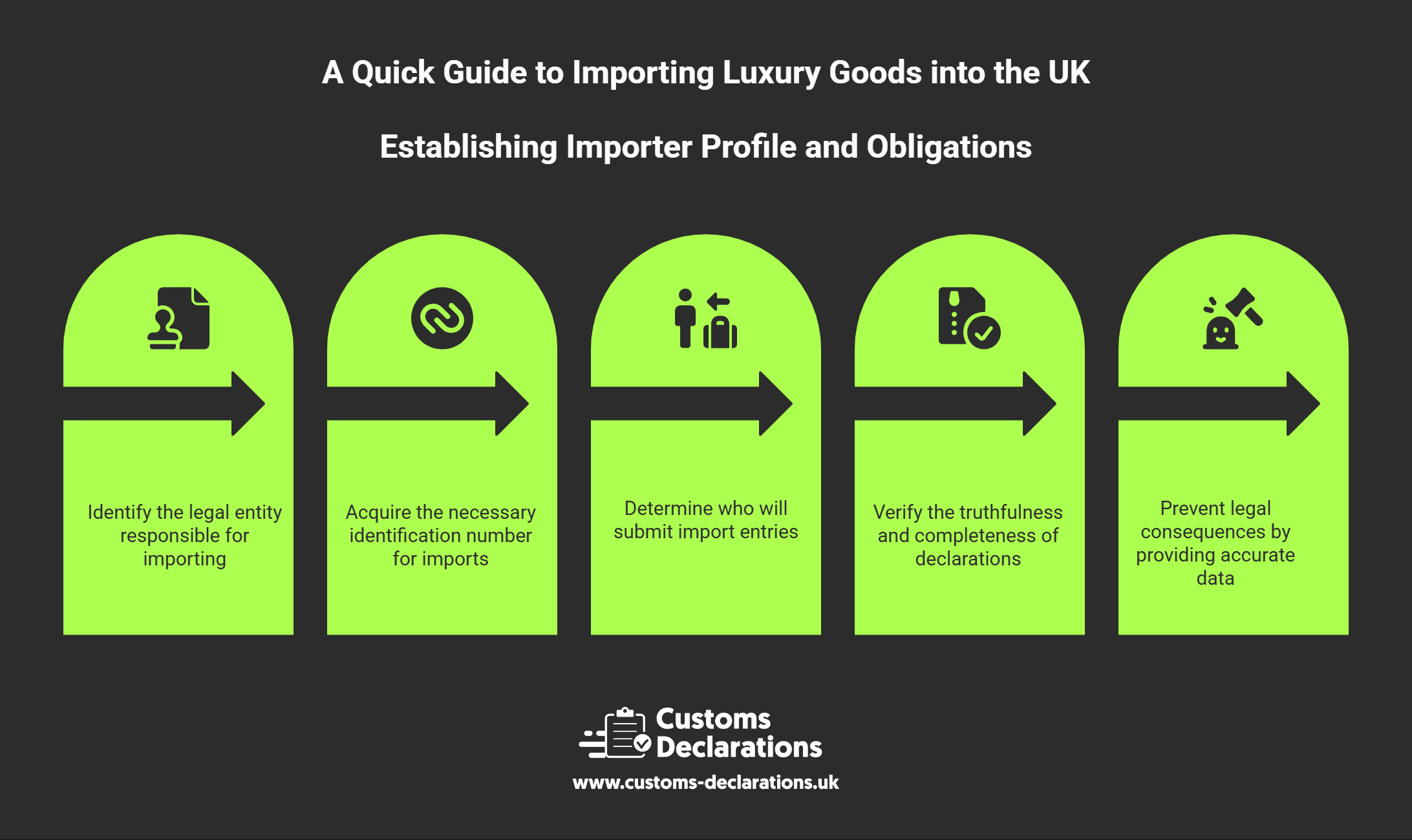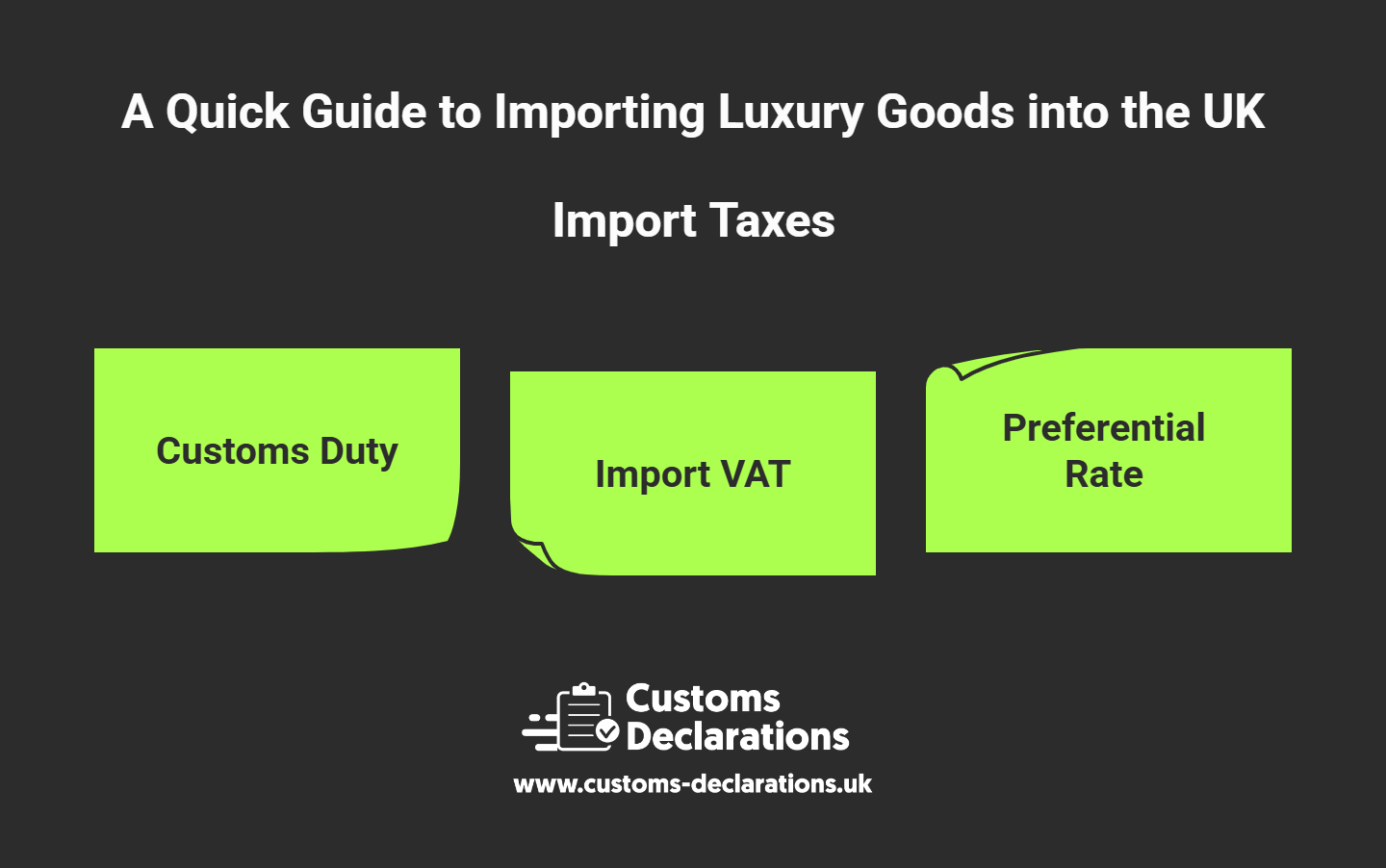Introduction
From couture apparel and leather goods to fine jewellery and prestige timepieces, luxury categories command premium prices and discerning customers. That same exclusivity attracts heightened scrutiny at the border. Whether you are a boutique scaling cross-border sourcing or a brand managing direct-to-consumer shipments, successful importation hinges on three pillars: precise tariff classification and origin treatment, accurate calculation of duties and VAT, and an impeccable customs declaration supported by complete, consistent documentation. This guide consolidates the most relevant requirements for luxury consignments entering the UK and explains how to file efficiently through the Customs Declarations UK (CDUK) platform to reduce errors and avoid delays. It also signposts related compliance areas—intellectual-property protection, valuation checks, and controls on restricted materials—so your imports arrive on time and in full.



